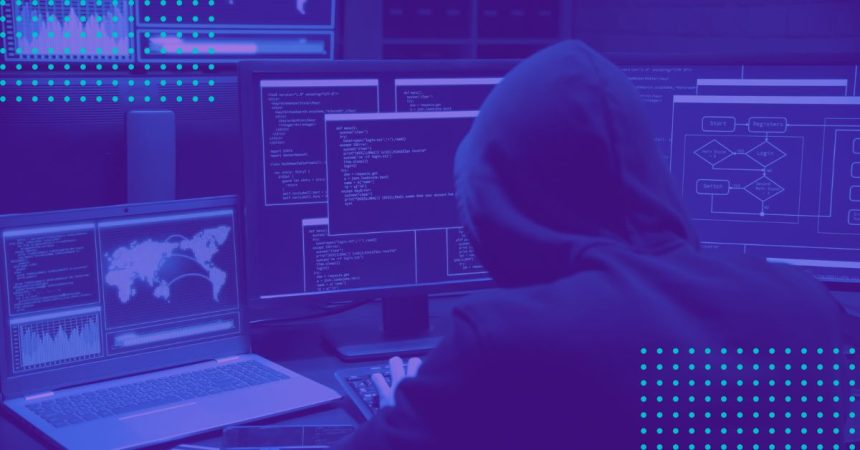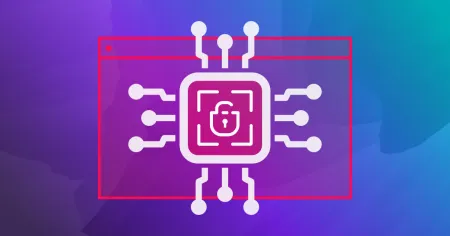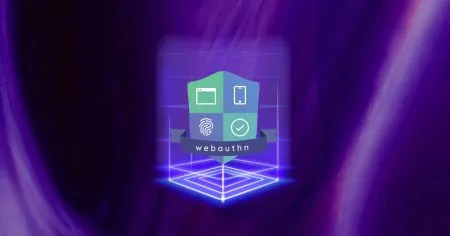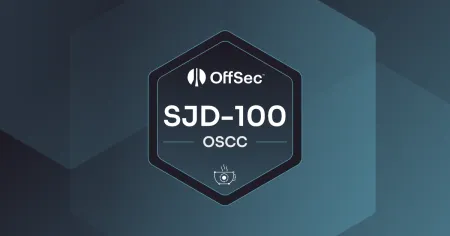Blog
Sep 8, 2023
Emerging threats: Adapting cyber defense to the changing landscape
As we step further into 2023, the digital world presents us with new cybersecurity challenges that can’t be ignored. Ransomware continues to evolve with smarter tactics. Cloud security, once deemed robust, faces fresh vulnerabilities as more businesses transition online. And then there’s 5G—its rapid adoption brings along a slew of concerns, making our defensive teams
5 min read

As we step further into 2023, the digital world presents us with new cybersecurity challenges that can’t be ignored. Ransomware continues to evolve with smarter tactics. Cloud security, once deemed robust, faces fresh vulnerabilities as more businesses transition online. And then there’s 5G—its rapid adoption brings along a slew of concerns, making our defensive teams work around the clock. Beyond these, there are subtler threats emerging, often overlooked but equally dangerous.
In this post, we aim to shed light on these issues, providing an easy-to-follow guide on what’s new in the cyber threat landscape and how professionals are addressing them.
1. Ransomware
Ransomware has witnessed a meteoric rise in both complexity and frequency. It involves malicious software that encrypts a user’s data, making it inaccessible until a ransom is paid to the attacker. Often, victims feel forced to pay to regain access to their data, but there’s no guarantee that the files will be decrypted even after payment.
Ransomware attacks have evolved over the years, becoming more sophisticated and targeted. Once a tool used primarily by opportunistic hackers to extort small sums from unsuspecting users, ransomware has grown into a formidable threat with attacks on hospitals, city governments, and major corporations.
The rise of Ransomware-as-a-Service (RaaS) platforms has allowed even those with minimal technical expertise to launch crippling attacks. The danger extends beyond just financial loss, as critical infrastructure, medical facilities, and essential services become targets, potentially risking lives. To counter this, organizations must maintain regular backups, employ advanced threat detection and response tools, and educate employees about the risks of malicious emails and downloads.
A massive ransomware attack was launched on Colonial Pipeline, a major U.S. fuel pipeline. The attackers demanded a ransom to unlock the affected systems, which the company eventually paid. This attack resulted in significant disruptions, causing fuel shortages in several states and highlighting the serious implications of ransomware on critical infrastructure.
2. Cloud Security
With the growing shift towards cloud computing, there’s an increasing need to ensure the security of data stored off-premises. As businesses move more of their operations to the cloud, attackers see it as a fertile ground for potential breaches. Threats, like misconfigured cloud storage, insufficient identity and access management, and insecure APIs, are rampant. Moreover, shared responsibility models, where the cloud provider and user have roles in maintaining security, can lead to gaps if not properly understood and managed. Businesses need to familiarize themselves with their cloud provider’s security measures and ensure they employ best practices to maintain the integrity of their data.
In a notable instance, Capital One faced a breach where an attacker exploited a misconfigured web application firewall, resulting in the compromise of over 100 million customer records.
3. Supply Chain Attacks
Supply chain attacks target the vendors or third-party service providers that organizations rely upon to deliver supplies and products. Instead of attacking the primary target directly, adversaries exploit vulnerabilities in the software or hardware supplied by supply chain third parties. Preventing these requires a multi-faceted approach, including rigorous vetting of third-party vendors, regularly monitoring and auditing their practices, and employing network segmentation to minimize the spread of an attack if one does occur.
The SolarWinds attack is a prime illustration. Cyber adversaries managed to inject malicious code into the update mechanism of SolarWinds’ Orion software, which was then distributed to its customers – many of whom were large corporations and government entities.
4. 5G Threats
The rollout of 5G networks promises faster speeds and increased connectivity. However, it also introduces new security concerns. With a larger number of connected devices, there are more potential entry points for attackers. The decentralized nature of 5G architecture makes traditional security measures less effective. Threats include potential spying on users, Distributed Denial of Service (DDoS) attacks on the more extensive network, and threats to connected critical infrastructure. To mitigate these threats, there’s a need for updated security protocols tailored for 5G and increased international cooperation to establish standards and best practices.
While no significant attacks on 5G infrastructure had been recorded, concerns include potential attacks on vulnerable IoT devices connected via 5G or exploiting potential misconfigurations in 5G network slices.
5. Phishing and Social Engineering
While not new, phishing and social engineering tactics continue to evolve and remain effective. Cybercriminals are becoming more adept at crafting convincing emails, messages, or phone calls to trick individuals into revealing sensitive information, downloading malware, or performing actions that compromise security. The increasing use of AI in crafting such schemes can make them even more deceptive. Continuous training and awareness programs are vital for employees and individuals to recognize and avoid these threats. Advanced email filtering solutions, two-factor authentication, and regularly updated security protocols can further reduce the risk of successful attacks.
The U.S. Democratic National Committee email leak is attributed to a successful phishing attack. Attackers sent deceptive emails to committee members, leading them to enter their credentials into fake login pages, thereby granting access to the adversary.
Conclusion
As we’ve explored, 2023 is shaping up to be a pivotal year in the cybersecurity domain. The threats we face are not only evolving but are doing so at an unprecedented pace. Ransomware, cloud vulnerabilities, and the complexities of 5G networks are just the tip of the iceberg. It underscores the importance of staying informed and proactive. While defensive cybersecurity teams are tirelessly working to mitigate these challenges, awareness and education remain our first line of defense. By understanding these threats and staying updated, we can all play a part in safeguarding our digital landscape. As technology progresses, so must our efforts to protect it.
As cybercrime grows exponentially, having a strong cybersecurity team in place has never been more critical than it is for today’s businesses. OffSec can help you improve your organization’s security posture and drive long-term success through talent development.
Learn Enterprise provides exclusive access to the OffSec Learning Library (OLL) that enables enterprise security teams to fight cyber threats better and improve their security posture with indispensable offensive and defensive skills training. Contact us to learn more.
Stay in the know: Become an OffSec Insider
Get the latest updates about resources, events & promotions from OffSec!
Latest from OffSec

Penetration Testing
AI Penetration Testing: How to Secure LLM Systems
Explore how AI penetration testing enhances LLM security, addressing unique vulnerabilities and improving cyber defenses.
Apr 3, 2025
8 min read

Research & Tutorials
CVE-2024-9956: Critical WebAuthentication Vulnerability in Google Chrome on Android
Discover CVE-2024-9956, a critical Chrome flaw on Android allowing Bluetooth-based PassKey theft, and learn key mitigation strategies.
Mar 26, 2025
3 min read

OffSec News
Learn Secure Java Development with OffSec’s New Course
Master secure Java coding with OffSec’s SJD-100 course. Enhance app security and gain hands-on experience to secure your coding practices.
Mar 18, 2025
4 min read